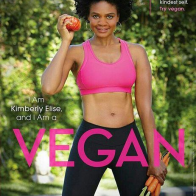 When people ask vegetarians about their diet, usually, the first question that pops up is: “Where do you get your protein from?” Creative, organized, and well-funded marketing campaigns paid for by the countless executives inside the meat industry have propagandized protein consumption. As a result, no one is totally sure about how much protein one should eat, and more importantly, where to receive the best quality protein.
When people ask vegetarians about their diet, usually, the first question that pops up is: “Where do you get your protein from?” Creative, organized, and well-funded marketing campaigns paid for by the countless executives inside the meat industry have propagandized protein consumption. As a result, no one is totally sure about how much protein one should eat, and more importantly, where to receive the best quality protein.
It’s no great surprise that Americans chow down on a lot of protein. We love beef and consume about 67 pounds per capita annually (that’s four times the international average). The popularity of low-carb regimes such as Atkins has also made meat the go-to food for dieters.
In fact, the average person eats about double the amount of protein that their body requires, according to the results of 2007-2008 National Health and Nutrition Examination Survey conducted by the Centers for Disease Control and Prevention.
While America gorges on protein, the levels of heart disease, cancer, and diabetes among citizens continue to rise. Many doctors are starting to question the widespread assumption that meat is an essential part of one’s plate.
Many supplement companies buy athletic trainers and nutritionists in order to push their protein supplements, which need little to no Food and Drug Administration oversight. There is little evidence that muscular activity increases the need for protein, except for the small amount required for the development of muscles during physical conditioning.
How to fulfill your daily protein requirement
According to a story published on Yahoo!, the human body uses protein to repair damaged cells and to build new ones. Marion Nestle, professor of nutrition at NYU and author of What to Eat, estimates that the average adult man needs about 65 grams of protein a day and the average adult female needs about 55 grams. Some sources, such as the Centers for Disease Control and the World Health Organization say you can maintain a healthy diet with even less.
Proteins are complicated molecules made by assembling simple building blocks (amino acids) together in a chain (polypeptide chain). Some 20 different amino acids are used to synthesize proteins, eight or nine of which are designated essential (depending upon whose information you read). The term “essential” in nutrition means that the nutrient in question must be eaten or otherwise consumed, as the body cannot synthesize it.
What does this actually mean in terms of food choices? The National Institutes of Health explains that most people can meet their daily protein requirement by eating two to three small servings of a protein-rich food a day.
Examples of a single serving of protein include:
- 1 egg
- 2 tablespoons of peanut butter
- 2-3 ounces of red meat, poultry, or fish.
- ½ cup of cooked dried beans such as black beans or chickpeas.
Whole grains, seeds, and vegetables also contain protein, so consuming enough is not difficult even if you don’t eat meat.
All plants and and fruit have protein, so vegetarians and vegans can easily get what they need by balancing complimentary proteins such as spinach, kale, wild rice, and/or tofu. Nutritionists used to recommend combining foods at the same meal, but research now shows that is unnecessary.
Are there drawbacks to eating more protein?
Eating large amounts of red and processed meats is associated with higher rates of heart disease and cancer, and most nutritionists are scared to say that so-called “healthier” and “leaner” like chicken, turkey, and seafood have just as much cholesterol as red meat.
Cholesterol Content of Popular Protein
Ground Beef 95% lean
Serving Size: 3oz
Protein: 18g
Cholesterol: 53g
Chicken Breast
Serving Size: 3oz
Protein: 18g
Cholesterol: 54g
Spinach
Serving Size: 24oz
Protein: 18g
Cholesterol: 0g
Granted, 24 ounces of spinach is an absurd amount to eat at one time, but for rhetorical purposes, one can see that there is no difference in the cholesterol in the aforementioned meats, however, one can over-indulge on spinach and still stay healthy and cholesterol free.
However, it’s less well known that your protein choices can have a substantial impact on the environment. Meat and dairy production requires tremendous amounts of fuel, pesticides, and chemical fertilizers, and generates greenhouse gases. The Environmental Working Group’s (EWG) recently published Meat Eater’s Guide points out that if you ate once less burger a week it would be the environmentally-positive equivalent of taking your car off the road for 320 miles.
Meat is also expensive. Not all proteins are created equal — neither at the doctor’s office, nor the cash register. Here’s a comparison of three typical proteins:
Porterhouse steak
Serving size: 4 ounces
Protein: 22 grams
EWG carbon footprint rating: 2 nd worst out of 20 analyzed
Cost: 4 dollars
Fat: 22 grams
Saturated fat: 9 grams
Farm-raised salmon
Serving size: 4 ounces
Protein: 22 grams
EWG carbon footprint rating: 5th worst
Cost: 3 dollars
Fat: 10 grams
Saturated fat: 2 grams
Lentils
Serving size: 1 cup
Protein: 17.9 grams
EWG carbon footprint rating: best
Cost: 20 cents
Fat: zero
Saturated fat: zero
Many people find meat to be a delicious and satisfying component of their diet that they don’t want to sacrifice. But if you want to save money, eat a nutritionally sound diet, and are concerned about the impact meat and dairy production has on the planet, consider reducing your consumption.
Here are some tips from the EWG’s Meat Eater’s Guide:
- Reduce portion sizes by eating one less burger or steak each week, or participate in Meatless Mondays by skipping meat (and cheese if you can swing it) just one day a week.
- Choose the healthiest protein sources when you can. Beans, low-fat yogurt, and nuts are all high in protein and low-impact.
- When you do eat meat and cheese, eat the highest quality that you can afford. (One way to save money is to eat less, but better quality meat and dairy products.) Here’s a guide decoding the labels, from cage-free to grass-fed.
- Don’t waste meat. Uneaten meat accounts for about 20 percent of meat’s greenhouse gas emissions.
- You don’t have to become a vegetarian or go to other extremes. These small changes will help reduce your impact, while providing plenty of protein in your diet.







Well put! I am continually impressed with the astuteness of your presentations. I give this advice to all my patients when asked about diet and vegetarian choices.
Great information! I know that you get protein from vegetables, beans, nuts, but I go completely blank, when folks ask me where are you getting your Protein from, when I say I’m eating fruits and vegetables more, and feeling better… It’s really funny, how folks that are Huge meat-eaters, are the 1st to question the benefits of eating Healthier??! Duh??
Good information
Well put and nice research. I particularly like: “Creative, organized, and well-funded marketing campaigns paid for by the countless executives inside the meat industry have propagandized protein consumption.” People are being hoodwink and bamboozled by industry.
Great information. As an active woman, I saw the so called lowest-level of protein as moderately off. I need about 1.5 times that amount in a day’s worth of intake just to combat a muscle-wasting problem in one leg—and watching my cholesterol made that seem almost impossible.
I had completely forgotten how much quality protein can be had outside of the animal-protein umbrella. Now that I have this information, getting things taken care of is going to be much easier.
@Rai:
Try the online cronometer software, for free.
It is a great tool to keep track of your nutrition,telling you the ammount of all essential amino acids you got with your fat, minerals, vitamins, fatty acids and so on.
If you have a wasting problem, keep up with your omega3 and 6 levels. omega6 to omega 3 should at least be 5:1, better 2:1.
Omega6 promotes inflammation which also can worsen conditions where muscles dwindle(or joint/skin inflammation).
Flax seeds and flax seed oil provide the simple omega3 which binds to the same enzymes as omega6 would and as such keep omega6 from beeing converted to an inflammation agent.
Complex omega3 from fish oil is already converted and doesn´t bind to the converters, so omega6 can dock on..plant oils are more beneficial in this case.